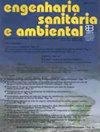Analysis of phosphorus recovery based on vivianite formation for practical applications
IF 0.5
4区 环境科学与生态学
Q4 WATER RESOURCES
引用次数: 0
Abstract
ABSTRACT Phosphorus (P) is considered a non-renewable resource. Owing to the increasing consumption of phosphorus in daily life, the “P crisis” is imminent. To address this crisis, it is urgent to find new phosphorus resources. This paper summarizes the research progress of P recovery based on vivianite formation from waste. Specifically, the advantages and disadvantages of optimizing the Fe source and pH in waste-activated sludge (WAS) and the co-fermentation of WAS and food waste are analyzed. Thereafter, the advantages and disadvantages of increasing the Fe dosage in full-scale wastewater treatment plants is discussed and an optimization scheme is proposed on this basis. By analyzing the advantages and disadvantages of comparative experimental results, two recovery methods are proposed to recover a large amount of P (≥ 83% total P) as high-purity vivianite (≥ 93%).基于橄榄石地层的磷回收分析及其实际应用
磷(P)被认为是一种不可再生资源。由于日常生活中磷的消耗量不断增加,“磷危机”迫在眉睫。为解决这一危机,迫切需要寻找新的磷资源。本文综述了利用废物生成活铁矿回收磷的研究进展。具体分析了垃圾活性污泥(WAS)中铁源和pH的优化以及WAS与厨余共发酵的优缺点。在此基础上,讨论了在规模污水处理厂增加铁投加量的利弊,并在此基础上提出了优化方案。通过对比实验结果的优缺点分析,提出了两种回收方法,均可回收大量P(总P≥83%)为高纯活石(≥93%)。
本文章由计算机程序翻译,如有差异,请以英文原文为准。
求助全文
约1分钟内获得全文
求助全文
来源期刊

Engenharia Sanitaria E Ambiental
WATER RESOURCES-
CiteScore
0.90
自引率
20.00%
发文量
101
审稿时长
>12 weeks
期刊介绍:
Information not localized
 求助内容:
求助内容: 应助结果提醒方式:
应助结果提醒方式:


